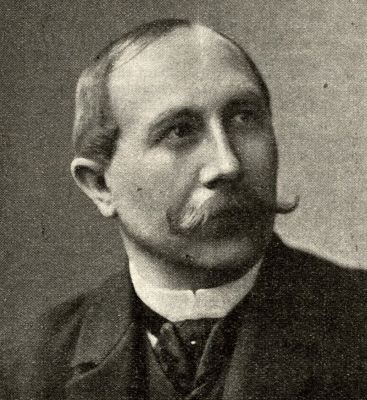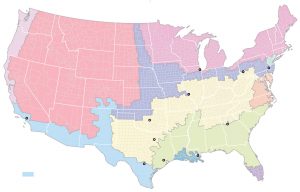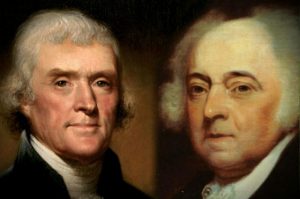
This blog is the third in a series of four on the position of William Foxwell Albright as the dean of American Biblical archaeology. The current issue of NEA includes the article “Dawn and Descent: Social Network Analysis and the ASOR Family Trees” by Diane Harris Cline, Eric H. Cline, and Rachel Hallote (NEA 87:2 2024:122-131). The article is based on a survey of ASOR members to determine educational experience and connections or family trees among the scholars. The results shed light on the “urban myth of William F. Albright as the ‘founder’ of biblical archaeology.”
In the first blog (The ASOR Family Tree: William Foxwell Albright) , I explored the Methodist role in the development of the Albright’s biblical thought. Through Methodist Review the child in Chile was introduced to the conflict between the forces of light and darkness in the biblical arena. Methodist Robert W. Roger’s book A History of Babylonia and Assyria published by Methodists became known to young William through Methodist Review. Thereafter Albright’s course was set. He would fight the fight not by being a missionary or a circuit rider like his father, but through archaeology.
In the second blog, I explored the introduction of Friedrich Delitzsch and Pan-Babylonianism to Albright again through Methodist Review (Albright and Delitzsch: Their Pre-Academic Relationship).
This blog continues that trajectory with the study of Hermann Hilprecht. Only in the final blog will Albright, stealth student under Paul Haupt be addressed.
Hermann Hilprecht
Methodist Review saluted the efforts of the University of Pennsylvania in 1898 just when young William began reading it.
The greatest work of the United States in the field of archaeology, however, is that accomplished under the direction of the University of Pennsylvania in Babylonia.
After recounting the efforts of the professors of this university since 1884 in support of the historicity of the biblical story (and the pre-Ussher origin of human civilization), the column concluded with:
We shall await with interest for the translation of the tablets and documents found by the Pennsylvanian expedition in Babylonia, and greatly rejoice that so scholarly a man as Professor Hilprecht has undertaken this great task.
Further praise of Hilprecht followed. According to Methodist Review:
No one has done more to popularize the study of archaeology than Professor Hilprecht, of Philadelphia, who for this reason is better known to the general public as an archaeologist than any other scholar of his rank. His monthly contributions to the Sunday-School Times are always fresh, instructive, and reliable.
This praise of Hilprecht in Methodist Review occurred simultaneously with the appearance of ads
for Rogers A History of Babylonia and Assyria, the book which young William read that
launched his career in oriental studies.
The Sunday School Times was a weekly publication that served the needs of Sunday Schools. With the implementation of the Uniform Lesson plan led by Methodist John Heyl Vincent, all Sunday schools taught the same texts each week. The Sunday School Times aided that effort with articles geared for the teachers of different grade levels. In addition, it included newsworthy items relevant to its mission. That included archaeological articles as well. Albright read The Sunday School Times along with Methodist Review. These highlights from The Sunday School Times at the time Albright was attending Sunday School are suggestive of the people and discoveries the youngster was exposed to in addition to his reading of the Methodist Review:
1. A series of articles by Rogers between 1901 and 1903 based on the very book Albright had read in Chile as well as additional articles on archaeology and the Bible; Albright noted reading unspecified articles by Rogers in his Sunday School classes in his October 18, 1924 letter to him. It is reasonable to conclude that these articles were from the Sunday School Times and that therefore Albright read other articles from this publication during this time period as well.
2. A series of articles by University of Pennsylvania professor Hermann Hilprecht in a regular column “With Spick and Spade in Bible Lands” from 1901 that ended in 1904. Hilprecht had begun writing for the Sunday School Times in 1886. In 1902, the Sunday School Times referred to him as “the foremost living Assyriologist” whose column was “an absolute essential” for “one who wishes to know of the continued and ever-fresh revelations as to the inspired accuracy of God’s Word.”
3. Frequent articles by Bibliotheca Sacra editor George Frederick Wright on such subjects as the Creation, the Flood, Sodom (and its earthquake), and Jericho (and its earthquake). Wright was perhaps the foremost practitioner of his times of the effort to hold science and religion together as Albright would be in his time. Wright’s focus on the glacial age and the Flood would have resonated with Albright whose dissertation was on the Deluge.
4. A new archaeological column beginning in 1911 by Melvin Kyle a future collaborator with Albright in the Holy Land.
In addition, there were an on ongoing slew of archaeological-related articles by such prominent figures as A. J. Sayce and Albert T. Clay on such topics as Sennacherib and the Deluge.
During this time, The Sunday School Times weighed in on the “Babel and Bibel” controversy. In 1903, Herman Hilprecht authored an article on the contentious issue. He quoted the conclusion to Delitszch’s lecture in January as a sure-fire way to rouse his readership in case they weren’t familiar with the talk:
“Revelation! No greater aberration of the human mind can be imagined that the collection of invaluable remains of ancient Hebrew literature, as represented by the Old Testament, has been regarded for centuries as a religious canon, a revealed book of religion.”
So even if one did not have access to the speech in the original German, one could read excerpts of it in The Sunday School Times. Hilprecht, of course, went on to condemn the conclusions of Delitzsch and to assert Israel’s uniqueness from its neighbors in its development of monotheism, the prophets, and national conscience. Albright’s relationship to Pan-Babylonianism is not the issue here but it is reasonable to conclude that Hilprecht would have joined Rogers in Albright’s pantheon of warriors of light against German biblical criticism.
In 1903, Hilprecht published Explorations in Bible Lands: During the Nineteenth Century, intended for a more public audience than the normal academic publications on those subjects had been. Albright’s copy of this edition is now at the Southern Baptist Theological Seminary library. The book was cited by Albright in a footnote in his first published article in 1911 while at Upper Iowa University. In 1940, Albright later wrote about this book:
Among the more useful and reliable accounts of archaeological exploration and excavation in the Near East may be mentioned the following general treatments … [Hilprecht’s book was listed first as “Best for the period covered”].
However, Methodist Review did note that despite Hilprecht’s expertise, he should have been a more magnanimous human being:
This is especially true in his Explorations in Bible Lands During the Nineteenth Century, published in 1903. This work, excellent and valuable as it is, has certainly too much vinegar and pepper. The derogatory remarks and patronizing insinuations concerning Mr. Haynes, Dr. Peters, and other collaborators are decidedly acrimonious and caustic, and it goes without saying that such ungenerous words add nothing to the value of the book either from a literary or scientific standpoint. There is a vein of the uncharitable running through a large portion of this beautiful and instructive volume.
So Hilprecht was an acknowledged expert in Gilgamesh, praised by both Methodist Review and Albright over a 40-year period, and teaching at a school that was in the forefront of archaeology and Assyriology, but with a personality problem that was about to cause problems.
Certainly one could claim that it is unlikely that over a decade later Albright would remember this column when contemplating graduate school; on the other hand, one should not overlook first impressions and the power of imprinting. Methodist Review introduced young William to Rogers and he immediately bought the latter’s book once it was published; Methodist Review introduced young William to Hilprecht and he owned and used Hilprecht’s 1903 book by 1911 and praised it later in life. It is reasonable to inquire why Albright did not matriculate at the American graduate institution that arguably was the leader in the relevant disciplines for Albright’s areas of interest.
PETERS-HILPRECHT CONTROVERSY
During the first decade of the 20th century, the University of Pennsylvania was rocked by what was known as the Peters-Hilprecht controversy. It also involved Jastrow, head of the Semitics department and longtime foe of the still German-national Hilprecht. The long-standing conflict between these two University of Pennsylvania professors began to explode in 1903, at the time of the publication of Explorations in the Bible Lands. A review of the table of contents quickly reveals that Hilprecht expropriated a lion’s share of the book he edited for himself. His own excavations absorbed 355 pages in a 793-page book with the remainder for Egypt, Anatolia, Arabia, and all the other 19th-century Mesopotamian excavators combined. This action caused difficulties with scholars both within and outside his university.
The famous “Babel und Bibel” speech of Delitzsch continued to remain a controversial issue. Albright would have read about it in both Methodist Review and The Sunday School Times. Jastrow sought to procure Delitzsch’s services for the University of Pennsylvania but he was thwarted in those efforts by Hilprecht. The latter championed Assyriology for supporting the historical truths of the Bible, also the position of Methodist Review. As a result, Jastrow’s effort failed and Delitzsch remained in Germany.
This incident serves a reminder that the field of Assyriology was a small one where the people tended to know each other. The annual sessions of the American Oriental Society included 50-60 persons when Albright first began to attend them as a graduate student very similar to the size of the Ancient Near Eastern track at the AOS conferences today and a far cry from the several thousand at a Society of Biblical Literature conference. This intimacy highlighted the significance of egos among the educated elite and made personalities an important part of understanding what actually was going on. In this regard, oral tradition is an important complement to the written record of scholarship which may be as revealing of the human element as a monument erected by Pharaoh.
The final straw to this Hilprecht contretemps was a controversy over (1) what he had actually discovered, (2) where certain tablets about the flood actually had been found [or purchased], and (3) whether the tablets were gifts to the Babylonian Expedition Fund from him personally as he claimed, or from the Ottoman authorities who merely released the items through him. In addition to these legal/financial considerations, one also needed to address what the tablets actually meant: was Hilprecht’s translation valid?
The first issue led to an institutional response. Seven sessions of investigation in April, 1905, were conducted producing almost 600 pages of testimony. The scandal did not die when the University of Pennsylvania trustees exonerated Hilprecht and did not publish the proceedings despite Methodist Review‘s reporting this “gratifying” news. Meetings of two professional societies, the American Oriental Society and Society of Biblical Literature and Exegesis in 1905 and 1906, were caught up in this controversy. The lack of resolution of this contretemps from the scholars’ point of view led to sixteen Orientalists representing Harvard, Yale, Columbia, Johns Hopkins (Haupt), Chicago, and Union Theological Seminary asking Hilprecht to clear up the “imputations” on “the integrity of American scholarship.” This manifesto of complaint was publicly published in the American Journal of Semitic Languages and Literature along with Hilprecht’s response when the situation could not be resolved privately. Hilprecht followed in 1908 with a vigorous self-published defense. Albright’s 1908 edition of Hilprecht’s The So-Called Peters-Hilprecht Controversy is now at the Southern Baptist Theological Seminary library.
In 1910, Hilprecht published a text related to the biblical flood which continued the controversy. Albright’s 1910 edition of Hilprecht’s The Earliest Version of the Babylonian Deluge Story and The Temple Library of Nippur is now at the Southern Baptist Theological Seminary library. Let it be noted here that it revived the controversy as yet another example by the “reprobate” who continued to play fast and loose with the truth. Meanwhile, Methodist Review stood by its man whom it had praised in 1900 and 1905. The discovery and the disagreement over his interpretation of this flood text was reported by Methodist Review in 1910 with the following conclusion:
It will be perhaps admitted by scholars everywhere that this new fragment of a Deluge tablet was executed before the days of Abraham, and that the “father of the faithful” was perfectly familiar with the story of the Flood as related in the first book of the Hebrew Scriptures. This being true, there can be no reason for any school of critics to assert that the writer of Genesis borrowed the Deluge story not only from Babylonia but from the age following the captivity.
Then after declaring the similarity of the fragment to the Pentateuchal account even without Hilprecht’s emendations to the text, Methodist Review claimed:
It is a source of comfort to every earnest Christian student and lover of the Bible that the more we study the cuneiform inscriptions and other monuments of antiquity, the less reason we have for doubting the genuineness and authenticity of the Bible, and, indeed, the less reason for depressing the dates of the Old Testament books….
Finally, we may say that it is very unfortunate for American scholarship that a controversy has arisen and is still in progress concerning this fragment. It was especially uncalled for that the charges made against Hilprecht in 1904, but not substantiated, should have been brought before the public again in 1910.
Whatever the end of this controversy may be, jealousy has played too prominent a part in this matter, for, say what we may, Professor Hilprecht is no fakir, but a man of ripe scholarship and the peer of any living Assyriologist.
Once again, the University of Pennsylvania appeared as a place to go for Albright if he was willing to risk some controversy. However, the choice would be taken from him.
This publication of Hilprecht’s The Babylonian Expedition of the University of Pennsylvania in 1910, came as the Peters-Hilprecht controversy was about to conclude with the retirement of Hilprecht. Contrary to Sayce’s conclusion linking biblical awareness of the Flood story to the exilic period when Babylon supposedly first became a great city, Hilprecht declared that this latest cuneiform tablet of the Deluge Story conclusively proved that it was written and known before the time of Abraham at Ur. Recounting a conversation with the Provost of the University of Pennsylvania on December 1, 1909 when he reported this discovery, Hilprecht wrote:
Upon Provost Harrison’s inquiry as to the possible relation of this new text to the Biblical story, both with regard to its age and contents, I answered immediately that it had been inscribed more than 600 years before the time generally assigned to Moses, and in fact even some time before the Patriarch Abraham rescued Lot from the hands of Amraphel of Shinar and Chedorlaomer of Elam; furthermore, that in its preserved portion it showed a much greater resemblance to the Biblical Deluge Story than any other fragment yet published.
In case there is any uncertainty, Hilprecht here did equate Amraphel with Hammurabi. Furthermore, the excavation of this tablet, which he dated to the 21st century BCE, helped him to better identify the participants in the alliance referred to in the story of Genesis 14 and the political machinations of that time.
Hilprecht dated these events to the aftermath of the collapse of the Sargonic empire. Sargon the Great, the deity’s representative on earth, had conquered the four cardinal points of his known world with his capital at the cosmic center and Elam to the east, Subartu/Assyria to the north, Amurru to the west, and Shumer, now part of Akkad, to the south. Thus whoever defeated grandson Naram-Sin and plundered the latter’s capital had the right to declare himself to be “king of the four quarters of the world” as the successor by force to that empire. According to Hilprecht this was is precisely what had happened. It was in the aftermath of these events that the patriarch Abraham appeared in history as recounted in the story of Genesis 14 based on Hilprecht’s dating and interpretation of the newly discovered flood text. As to his role in the discovery, Hilprecht asserted:
[I]t will be recognized at once that I surely did not overestimate the value of our greatest discovery made at Nippur. If anything, I did not speak positively and enthusiastically enough about the fundamental importance of that great storehouse of human knowledge, religious conceptions and spiritual emotions, and its far-reaching influence upon the science of Assyriology and the entire history of civilization.
So the editor who had appropriated the lion share of his 1903 book to himself apparently still placed himself and his work at the cosmic center of Assyriology.
However, the manner in which Hilprecht substantiated his claims to the academic community may be interpreted as an object lesson for anyone seeking to employ archaeological discoveries to validate biblical texts. In five of the 20 footnotes to his analysis of this 14-line text, Hilprecht “supplements” the text with his own emendations and on one occasion uses the biblical flood story to restore the Babylonian text, a reversal of academic protocol. As a result of the application of his own emendations, Hilprecht unequivocally declared that the P version of the biblical flood story must be the oldest one by the writers posited in the Documentary Hypothesis instead of the youngest as traditionally thought:
This fact is so plainly depicted in the history of the city as represented by its ruins, that I would regard it as a waste of time to lose any more words about it.
The Amorites had overthrown the old order of things, the learned culture of Babylon, and they had established ties between Palestine and Babylonia in the time of Hammurabi/Amraphel, historical Abraham, and the story of Genesis 14. Thus it was precisely at the time of the story of Genesis 14 when the world of the ancient Near East was in transition and the opportunity to create a new cultural synthesis or religious innovation was most prevalent.
Hilprecht’s book produced a speedy response. The Philadelphia newspapers reported the discovery on March 19, 1910 and George Barton, of nearby Bryn Mawr College had responded in the final issue of JAOS in the very same year. Barton, who had served as the director of ASOR in Jerusalem in 1902-1903, had been in the forefront of those who earlier had condemned Hilprecht. The following citations amply illustrated the derogatory manner in which Barton held the scholarship and person of Hilprecht:
To base a conjectural emendation on another conjectural emendation to another passage which stood in another context is insecure ground.
Upon line 12 Hilprecht stakes a great deal, and his treatment of it is really astounding….He then supplies from the P Document of the Old Testament, without even telling us what the Babylonian form of the words would be….More extraordinary and inexplicable still, however, is Hilprecht’s note on line 12.
The writer is reluctantly compelled to believe that Hilprecht’s footnote is deliberately misleading and that the following statements of Hilprecht in the So-called Peters-Hilprecht Controversy are untrue.
Additional examples could be provided from this one article. Also in 1910, two Columbia professors, John Prince and Frederick Vanderburgh, voiced their criticisms, referring to Hilprecht’s “not unnatural desire to accommodate this fragment to the Old Testament account” while rejecting his conclusions and expressing concern over his actions:
To force biblical details into a mutilated Babylonian account is distinctly not permissible, and in so doing Hilprecht has largely injured the interest and value of his discovery from a scientific point of view.
In his 1916 dissertation, Albright copied the comments of the Columbia professors Prince and Vanderburgh in referring to “Hilprecht’s not unnatural desire to emphasize the importance of his find” and he supported the early date for the tablet which Hilprecht had proposed “in spite of the peculiar zeal a number of scholars have shown in lowering the date.” Hilprecht was right in his estimation of its value, but Albright chose to “pass silently over his attempt to inaugurate a new era in Biblical criticism by its aid.” The goal wasn’t necessarily wrong, the execution by Hilprecht was.
Hilprecht had crossed the line of acceptable scholarship in his desire to be the one who substantiated the biblical account. In his biographical article on Hilprecht, Benjamin Foster concluded:
Again, he seemed to be going beyond the evidence, perhaps for nonscholarly reasons, although he was by no means the only scholar of his day prone to enthusiastic presentation of biblical “discoveries” in Babylonian texts. Because Hilprecht’s main backers on the scholarly level were European Assyriologists, the debate began to assume a nationalistic character, with American scholars complaining of foreign interference in the American university scene….
He left the [University M]useum in 1911 embittered and with a strong sense of betrayal …. [and] settled in Munich, Germany ….After the armistice, he returned to Philadelphia and became a U.S. citizen.
Hilprecht resigned effective the beginning of 1911 after issuing a countercharge against Jastrow and Barton. He claimed that they had broken into his office and destroyed his files among other things. With Jastrow as the Department chair from 1910 until his death in 1921 and James Montgomery joining the faculty in the 1909-1910 school year, the University of Pennsylvania had turned the corner on putting the controversy behind it … but it would take some time for the turmoil to die down and for Albright to follow the guidance of Jastrow upon graduation from Hopkins and be united with Montgomery in ASOR in the 1920s.
LESSONS TO BE LEARNED
There was a lot for Albright to learn from this episode about how to present scholarship, how to present scholarship related to the Bible, and how to present scholarship related to the Bible in the American context. Now despite the comparatively large department dealing with the ancient Near East, despite the long-standing involvement in that area, and finally, despite Hilprecht’s specific involvement with the Gilgamesh epic, the subject mentioned in Albright’s letter to his father, it is easy to see why Albright in 1913 would have crossed off the University of Pennsylvania from the small list of potential graduate schools for him now that its popularizer of biblical scholarship and Gilgamesh expert was gone. Under slightly different circumstances, one can easily imagine Albright pursuing his interests in the Flood story, Genesis 14, and the Bible at the University of Pennsylvania, but in the tumultuous circumstances at the time when Albright was in college himself, this was one school to scratch off his list.
Beyond any personal considerations for Albright, the Hilprecht incident also represented “a significant milestone in the growth of Semitics in America” that bears notice. It reflected a change in the dynamics between American and European scholarship. The Europeans tended to side with German-born, German-national Hilprecht who continued to return home annually (for example, see both Pinches and Hommel in The Expository Times in 1910). European allegiance to German-national Hilprecht represented a corresponding danger to American scholarship if Hilprecht’s false scholarship was accepted as valid:
In Hilprecht, Jastrow saw a threat to the considerable recognition accorded to American scholarship over the previous two decades.
Looking back in 1918, Peters would comment, drawing on his own experience as a student in Germany, that there was much that he found unsound in German scholarship. Hilprecht understood the terms of the transatlantic battle and in his festschrift published in 1909, there was only one American contribution versus the nearly 30 European contributions.
This event legitimately may be regarded as a turning point in American scholarship:
During the course of the controversy, and perhaps as a result of it, American orientalists no longer turned to their European colleagues to set standards; in fact, one can almost see the tide turning against Hilprecht as he increasingly resorted to foreign support.
Wechsler and Ritterband characterize the event as the moment American orientalists were able “to declare independence” from European masters and establish standards as a corrective to German excesses. “The German born and educated H. V. Hilprecht served as a symbol for everything American Semiticists rejected in continental scholarship.” In this battle, Hilprecht represented a scholarship that was repugnant to his American colleagues. This confrontation added a new chapter to a relationship of long duration between the United States and Germany. The emerging schism was summarized by American Peters as follows:
I have often called attention to the curious coincidence that when we were discovering the antiquities of Sargon, his actual inscriptions, in Babylonia, a distinguished Berlin Assyriologist was publishing a work in which he proved Sargon to be a myth and in which Babylonian chronology was reduced to the same sorry pass as that of the Bible in the hands of its critics;
an observation very similar to the one made by Rogers in 1900. A decade or so later, University of Pennsylvania Professor Peters and Johns Hopkins University graduate Albright would be walking the Holy Land together when a new discovery about that nonmythical Sargon would show the way on how warrior heroes in the Bible similarly should be understood in history.
One of the consequences of the Peters-Hilprecht controversy would be the choices Albright would make as a postdoctoral student about his relationship with both the University of Pennsylvania and the new generation of German scholars. Albright’s decisions came against this backdrop of efforts by American scholarship to assert its independence from German scholarship. In this post-Harper post-Hilprecht era of American scholarship, who would assume the mantle of leadership? Albright’s relationship first to Haupt and then to the American James Henry Breasted should be understood within this larger context.
Footnotes available on request.









